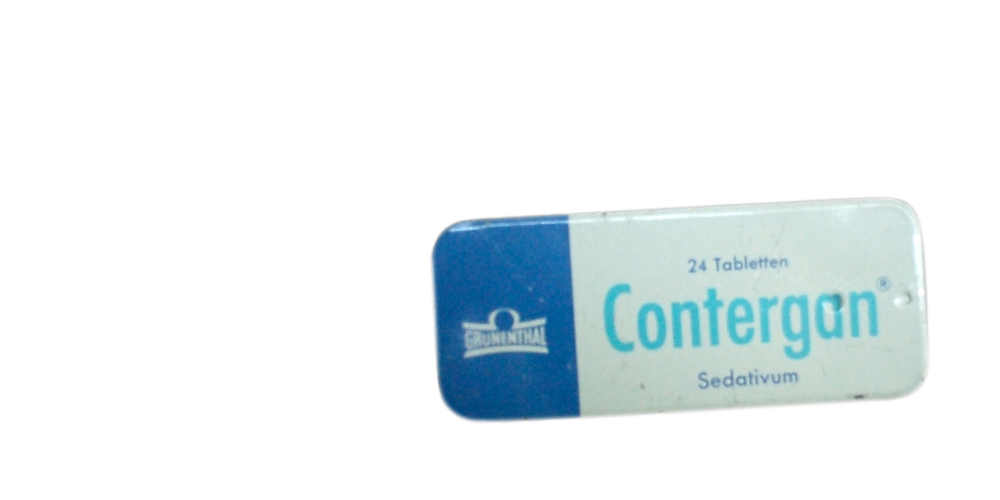Pharmakon
Il talidomide è un farmaco dalle mille vite e la sua storia non finisce con il suo ritiro dal commercio agli inizi degli anni ’60. Questo è il racconto del dopo e dei lasciti. Il racconto di come dalla più grande tragedia della storia della farmaceutica sia nata la moderna farmacovigilanza. Il racconto di come una molecola maledetta si sia trasformata in una nuova speranza per molti pazienti anche ai giorni nostri.
Bibliografia
Brynner R., Stephens T. Dark Remedy: The impact of Thalidomide and its revival as a vital medicine. Basic Books, 2001.
Dudley J., Berliocchi L. eds. Drug repositioning: approaches and applications for neurotherapeutics. CRC press, 2017.
Sheskin J. “Thalidomide in the treatment of lepra reactions.” Clinical Pharmacology & Therapeutics 6, no. 3 (1965): 303-306.
Iyer C. G. S., et al. WHO co-ordinated short-term double-blind trial with thalidomide in the treatment of acute lepra reactions in male lepromatous patients. Bulletin of the World Health Organization 45.6 (1971): 719.
Castilla E.E., Ashton‐Prolla P., Barreda‐Mejia E., Brunoni D., Cavalcanti D.P., Correa‐Neto J., Delgadillo J.L., Dutra M.G., Felix T., Giraldo A, Juarez N. Thalidomide, a current teratogen in South America. Teratology, 54(6) (1998): 273-277.
Vianna F. S. L., et al. Epidemiological surveillance of birth defects compatible with thalidomide embryopathy in Brazil. Plos one 6.7 (2011): e21735.
Vianna F. S. L., et al. Recognition of the phenotype of thalidomide embryopathy in countries endemic for leprosy: new cases and review of the main dysmorphological findings. Clinical dysmorphology 22.2 (2013): 59-63.
Sampaio E. P., Sarno E. N., Galilly R., Cohn Z. A., Kaplan G. Thalidomide selectively inhibits tumor necrosis factor alpha production by stimulated human monocytes. The Journal of experimental medicine 173, no. 3 (1991): 699-703.
Calabrese L., Alan B. Fleischer Jr. Thalidomide: current and potential clinical applications. The American journal of medicine 108, no. 6 (2000): 487-495.
Matthews S. J., McCoy C. Thalidomide: a review of approved and investigational uses. Clinical therapeutics 25, no. 2 (2003): 342-395.
D’Amato R. J., Loughnan M.S., Flynn E., Folkman J. Thalidomide is an inhibitor of angiogenesis. Proceedings of the National Academy of Sciences 91, no. 9 (1994): 4082-4085.
Singhal, Seema, Jayesh Mehta, Raman Desikan, Dan Ayers, Paula Roberson, Paul Eddlemon, Nikhil Munshi et al. “Antitumor activity of thalidomide in refractory multiple myeloma.” New England Journal of Medicine 341, no. 21 (1999): 1565-1571.
Ito T., Ando H., Suzuki T., Ogura T., Hotta K., Imamura Y., Yamaguchi Y., Handa H., 2010. Identification of a primary target of thalidomide teratogenicity. Science, 327.5971 (2010): 1345-1350.
Asatsuma-Okumura T., Ando H., De Simone M., Yamamoto J., Sato T., Shimizu N., Asakawa K., Yamaguchi Y., Ito T., Guerrini L., Handa H. p63 is a cereblon substrate involved in thalidomide teratogenicity. Nature chemical biology, 15.11 (2019): 1077-1084.
Routledge P. 150 years of pharmacovigilance. The Lancet 351, no. 9110 (1998): 1200-1201.
Fornasier G., Francescon S., Leone R., Baldo P. An historical overview over Pharmacovigilance. International journal of clinical pharmacy 40, no. 4 (2018): 744-747.
Sito AIFA. Farmacovigilanza. https://www.aifa.gov.it/web/guest/farmacovigilanza1 (ultimo accesso 6/08/2022)
DIRETTIVA DEL CONSIGLIO del 26 gennaio 1965 (65/65/CEE)
Sito AIFA. https://www.aifa.gov.it/normativa-di-riferimento-farmacovigilanza (ultimo accesso 6/08/2022)
Servizi di informazione teratologica. https://www.farmacovigilanza.eu/content/i-servizi-di-informazione-teratologica (ultimo accesso 6/08/2022)
EudraVigilance. Scheda talidomide.https://www.adrreports.eu/en/search.html# (ultimo accesso 6/08/2022)
Blaschke G., Kraft H.P., Fickentscher K. Koehler, F., 1979. Chromatographic separation of racemic thalidomide and teratogenic activity of its enantiomers (author’s transl). Arzneimittel-forschung, 29.10 (1979): 1640-1642.
Knoche B., Blaschke G. Investigations on the in vitro racemization of thalidomide by high-performance liquid chromatography. Journal of Chromatography A 666, no. 1-2 (1994): 235-240.
Tokunaga E., Yamamoto T., Ito E. Shibata N. Understanding the thalidomide chirality in biological processes by the self-disproportionation of enantiomers. Scientific reports, 8.1 (2018): 1-7.
